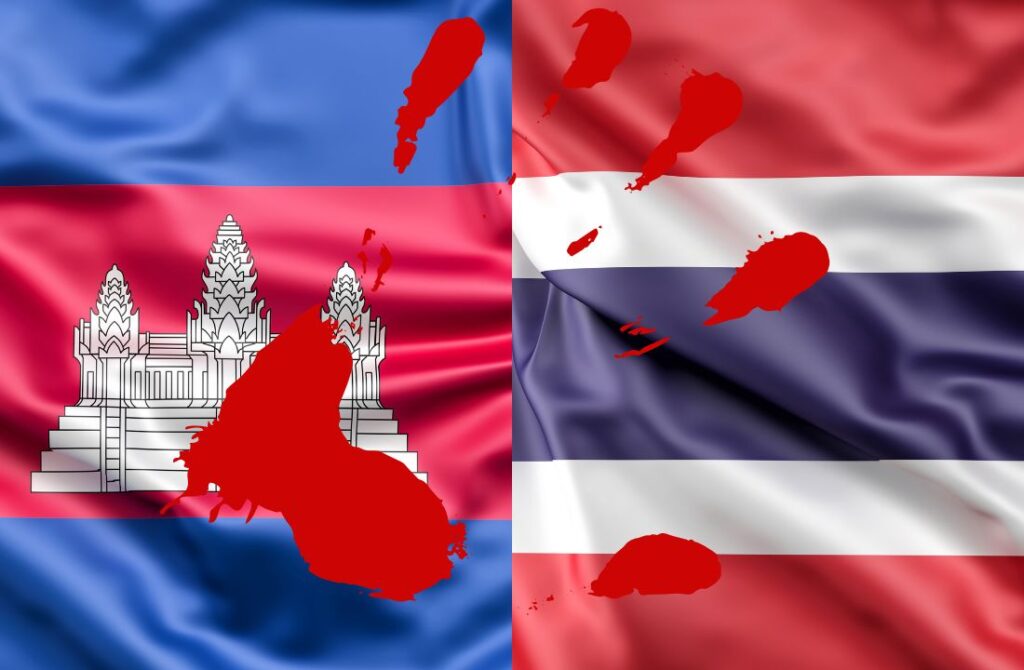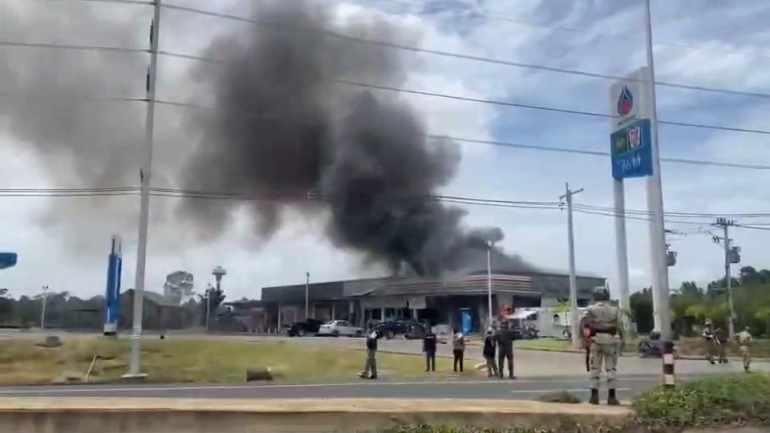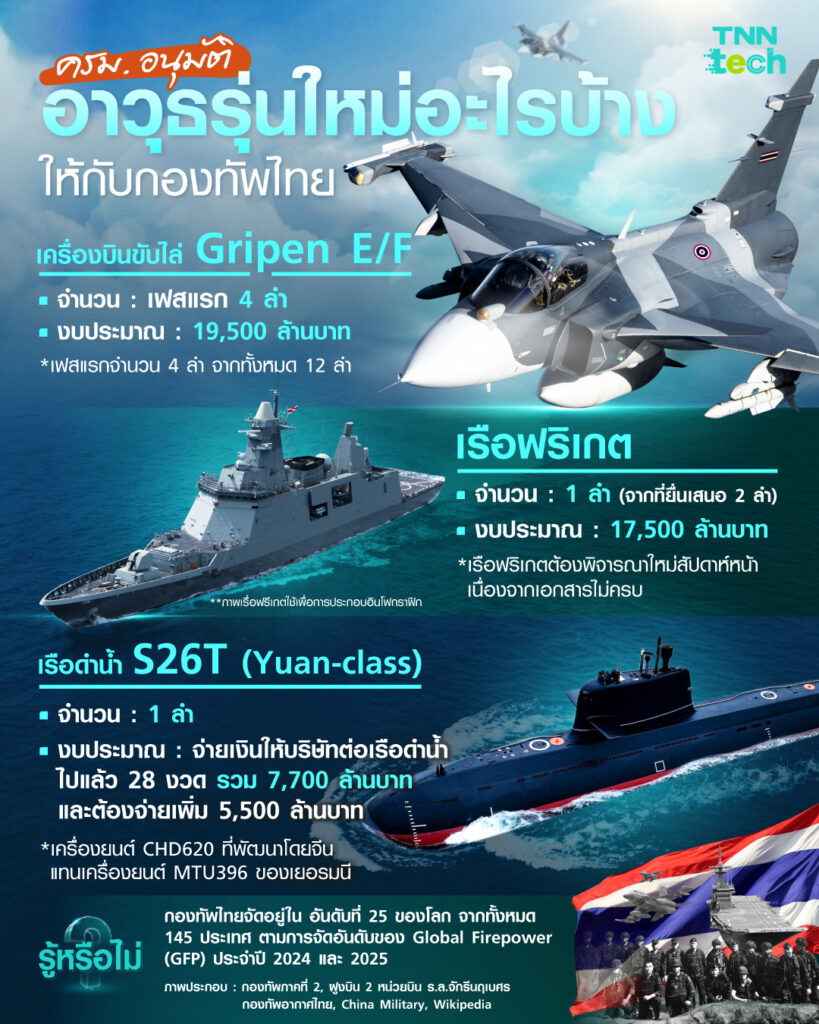
“A fragile green dream under fire”
At the edge of a quiet village at the border of Thailand, a solar installation site lies abandoned. Cement footings for the panels have been poured, the grid connection approved. Then came the news: military tensions along Thailand’s border had escalated. Within days, investors froze funding and contractors pulled out. The project stopped—not because of economics, but because of rising political tensions.
It’s a hypothetical scene. But it reflects a real and pressing truth: Thailand’s climate finance future is vulnerable to political instability.
The country has made real progress—green bonds, clean energy targets, and global funding commitments. Yet all of this rests on the assumption of peace.
Armed conflict doesn’t just endanger lives—it drains public budgets, spooks investors, and isolates nations diplomatically. In short, it puts climate finance at risk.
As tensions rise in the region, Thailand must ask itself a difficult question: is it prepared to protect its most overlooked climate asset—stability?
What Is Climate Finance and Why It Matters to Thailand
“A promise of billions, tied to peace”
Climate finance refers to the public and private flows that help countries cut emissions and adapt to climate change. And in Thailand, it has become a lifeline for meeting its climate goals.
Since 2020, Thailand has received millions from the Green Climate Fund (GCF), partnered with multilateral development banks like the Asian Development Bank (ADB), and hosted technical programs under the United Nations Development Programme’s Biodiversity Finance Initiative (UNDP BIOFIN) initiative.
At home between 2018 and May 2025, the Thai government allocated approximately THB 250 billion toward climate mitigation, averaging around THB 33.6 billion per year.
For adaptation, public spending between 2020 and 2024 totalled THB 143 billion, with over 90% of that funding coming directly from government sources—an annual average of about THB 28.6 billion. Meanwhile, green bond issuances and private-sector renewable energy deals are building momentum.
All of it supports the country’s official long-term strategies: carbon neutrality by 2050, and net-zero emissions by 2065, as pledged in its Nationally Determined Contributions (NDCs) fand Long-term Low Emissions Development Strategies (LT-LEDS). But every baht, every dollar, depends on peace and predictability.

BM-21 rocket hit PTT gas station in Ban Phue, Kantaralak District, Sisaket Province / Photo From Thai PBS
Instability Comes with a Cost: What Armed Conflict Would Do to Climate Finance
“When Tensions Rise, Climate Funds Retreat”
Climate finance runs on stability. It rewards predictability, institutional trust, and long-term planning. Which is why, when uncertainty sets in, whether political or economic, climate finance becomes more cautious, often slowing or shifting elsewhere.
Regardless of whether instability arises from cross-border tensions or domestic conflict, any form of armed confrontation can undermine investor confidence and disrupt the flow of long-term climate finance
In Yemen, more than a decade of civil war has crippled efforts to expand solar energy, climate-resilient agriculture, and water infrastructure—transforming long-term adaptation projects into short-term humanitarian responses.
And in Afghanistan, the 2021 Taliban takeover led to the withdrawal of hundreds of millions in environmental and climate finance, excluding the country from global forums and stalling progress.
Capital is mobile; it doesn’t wait for peace. Multilateral climate funds are bound by fiduciary rules that make instability a red flag. Once political instability arises, disbursements are delayed or cancelled altogether.
In Myanmar, the 2021 military coup effectively froze climate finance . Projects supported by the Green Climate Fund and Global Environment Facility were suspended with at least $85 million loss. Donors pulled back and international NGOs ceased direct cooperation with the junta, crippling adaptation and mitigation efforts.
If Thailand were to enter a conflict—even a short, contained one—it would likely face the same fate. Global climate finance is risk-averse by design. Once credibility is shaken, climate finance becomes harder to secure
What takes a decade to build in credibility can be lost in weeks. And in climate finance, credibility is currency.
Budget Reallocations: The Green Budget Gets Cannibalised
“From mitigation to militarisation”
Armed conflicts don’t just claim lives, they consume national budgets. And in Thailand, even the possibility of such a scenario could cannibalise what little is currently spent on climate action
Thailand’s climate-related government budget is modest for adaptation and limited in its mitigation role. Between 2018 and 2024, adaptation spending was approximately THB 14 billion. For mitigation, total investment amounted to THB 1.7 trillion over 2018–2025, but only THB 145 billion came from government sources.
That number would shrink fast if military expenditures surged in response to conflict.
Meanwhile, civil agencies tasked with environmental planning would likely be hollowed out or repurposed. In times of heightened instability, long-term resilience gives way to short-term crisis response.
In a nation fighting to protect its borders, climate policy quickly loses political relevance. Yet the cost of delay—rising emissions, stranded assets, lost trust—will outlast the fighting.

Stranded Assets and Stranded Futures
“Stuck in the fossil lane”
If armed conflict breaks out, Thailand’s energy transition won’t just slow—it could reverse.
Already, the country’s energy system is heading toward a precarious lock-in. The Draft PDP2024 projects over 41% of power generation from gas by 2037.
A military conflict would only deepen that lock-in. Energy security tends to trump climate logic during periods of conflict. Policymakers may double down on gas, coal, or imported LNG to ensure reliability.
That would be a costly mistake. Thailand has now the second lowest and is projected to have the lowest solar levelized cost of electricity (LCOE) in ASEAN by 2040 at around $0.074/kWh. Yet its share of planned capacity additions remains low at only 17% of the country’s energy mix by 2037.
The grid reform and battery storage needed to scale up solar are already underfunded. In time of instability, they would likely be shelved altogether.
By sticking with fossil infrastructure under the guise of security, Thailand risks locking itself into outdated systems—while competitors leap ahead with renewables.
What Should Thailand Do: Peace, Diplomacy, and Fiscal Integrity
“The climate cost of conflict is not worth it”
Armed conflict would not only derail donor support and private investment—it would hollow out the very institutions designed to build a low-carbon future.
That makes diplomacy and nonviolence not just moral choices, but financial imperatives.
Climate credibility is hard-won and easily lost. Thailand’s seat at global climate tables, its access to concessional finance, and its expanding green bond market all depend on the perception of long-term stability.
Peace is the precondition. Without it, climate finance fades. And with it, so does the future it was meant to secure.
Closing Reflection
“Armed conflict threatens not only lives, but futures”
A peaceful, green Thailand is within reach: a nation powered by sunlight, respected on the global climate stage, and trusted by investors to lead the energy transition in Southeast Asia. That future is built not only on good policy—but on peace.
Conflict would unravel it all.
Because it doesn’t just destroy infrastructure—it destroys credibility, trust, and time. And time is the one thing the climate crisis won’t give back.
